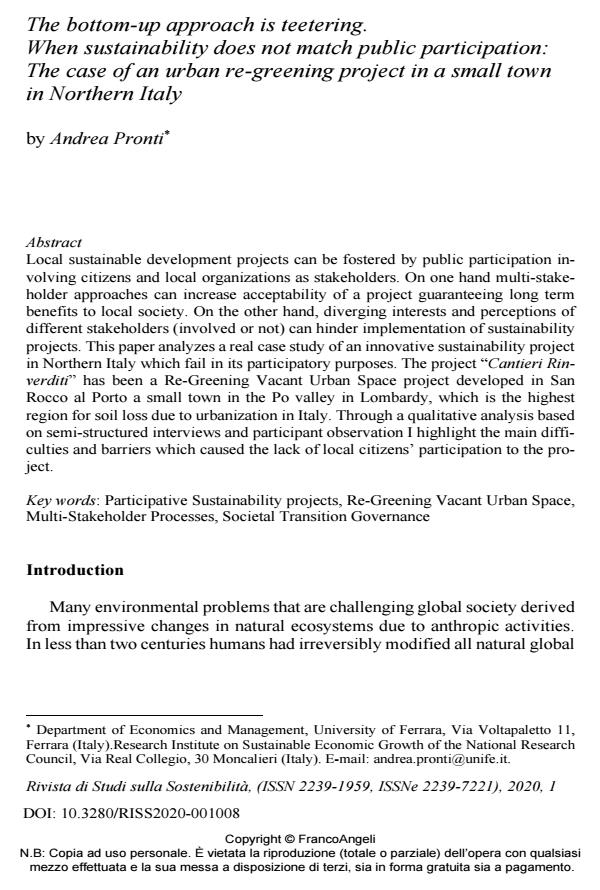The bottom-up approach is teetering. When sustainability does not match public participation: The case of an urban re-greening project in a small town in Northern Italy
Titolo Rivista RIVISTA DI STUDI SULLA SOSTENIBILITA'
Autori/Curatori Andrea Pronti
Anno di pubblicazione 2020 Fascicolo 2020/1
Lingua Inglese Numero pagine 29 P. 129-157 Dimensione file 415 KB
DOI 10.3280/RISS2020-001008
Il DOI è il codice a barre della proprietà intellettuale: per saperne di più
clicca qui
Qui sotto puoi vedere in anteprima la prima pagina di questo articolo.
Se questo articolo ti interessa, lo puoi acquistare (e scaricare in formato pdf) seguendo le facili indicazioni per acquistare il download credit. Acquista Download Credits per scaricare questo Articolo in formato PDF

FrancoAngeli è membro della Publishers International Linking Association, Inc (PILA)associazione indipendente e non profit per facilitare (attraverso i servizi tecnologici implementati da CrossRef.org) l’accesso degli studiosi ai contenuti digitali nelle pubblicazioni professionali e scientifiche
Local sustainable development projects can be fostered by public participation involving citizens and local organizations as stakeholders. On one hand multi-stakeholder approaches can increase acceptability of a project guaranteeing long term benefits to local society. On the other hand, diverging interests and percep-tions of different stakeholders (involved or not) can hinder implementation of sus-tainability projects. This paper analyzes a real case study of an innovative sus-tainability project in Northern Italy which fail in its participatory purposes. The project "Cantieri Rinverditi" has been a Re-Greening Vacant Urban Space project developed in San Rocco al Porto a small town in the Po valley in Lombardy, which is the highest region for soil loss due to urbanization in Italy. Through a qualitative analysis based on semi-structured interviews and participant observation I high-light the main difficulties and barriers which caused the lack of local citizens’ par-ticipation to the project.
Parole chiave:Participative Sustainability projects, Re-Greening Vacant Urban Space, Multi-Stakeholder Processes, Societal Transition Governance
Andrea Pronti, The bottom-up approach is teetering. When sustainability does not match public participation: The case of an urban re-greening project in a small town in Northern Italy in "RIVISTA DI STUDI SULLA SOSTENIBILITA'" 1/2020, pp 129-157, DOI: 10.3280/RISS2020-001008